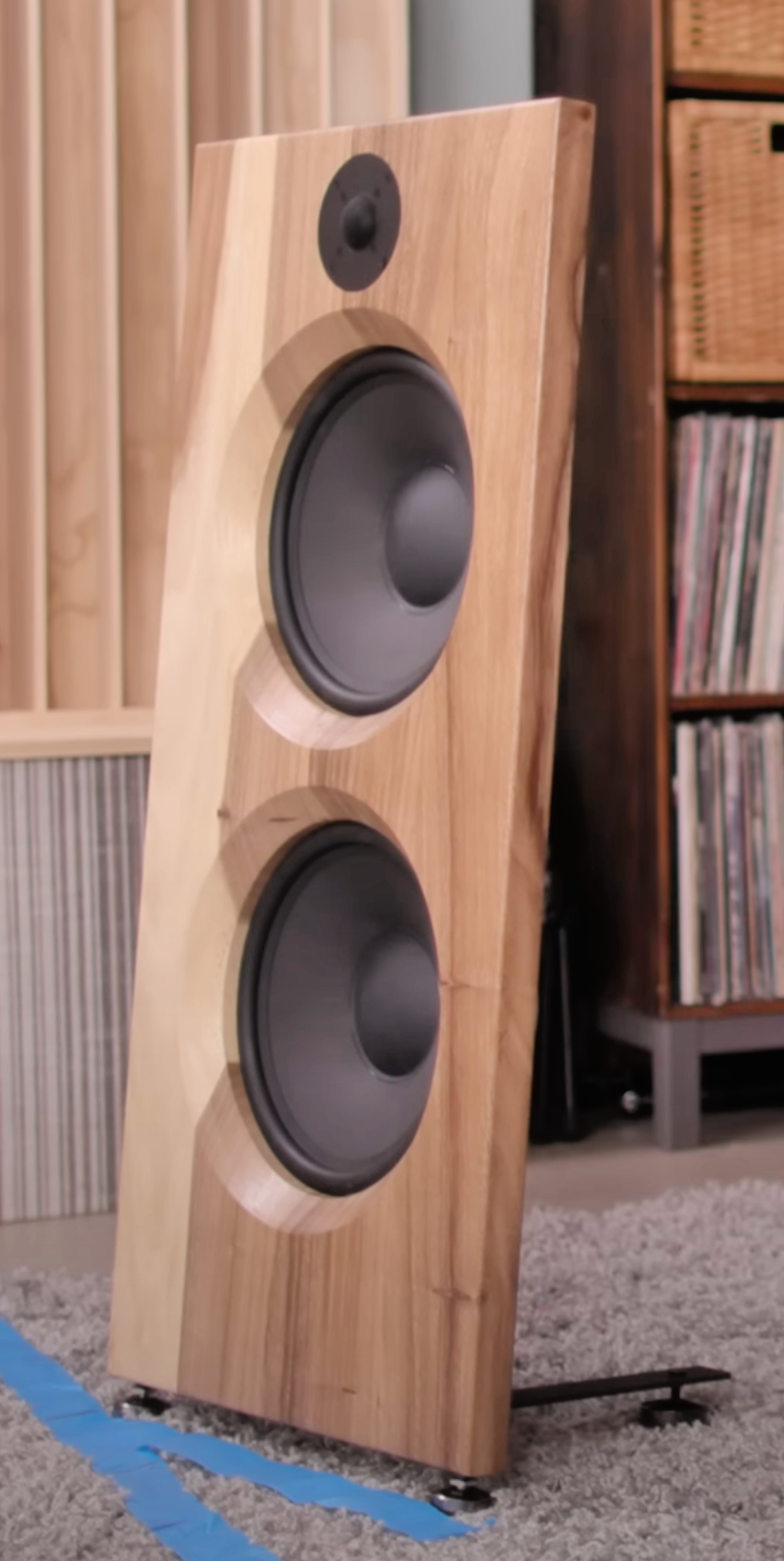Audio-video news / topics and links
Notes TOC
- Caladan Clayton Shaw Acousticlab speakers
- R-2R Ladder DAC
- High density micro-LED display
- Beautiful speakers brand: Deadalus Audio
- Tube amplification comment & Euphonic distortion (quick note)
- Apple lossless audio
- LG acquired OLED inkjet printing technology
- LG OLED TV business turns profitable at last
- Oppo Sonica DAC
- McIntosh MA252 integrated amplifier
- To balance or not to balance
- Micro-LED display
- LG OLED65C7
- Complex to the ear but simple and enjoyable to the mind
- Audio Analog Crescendo integrated amplifier
- Display Myths
- iPod / iPhone as a descent digital source
- Laser Turnable
- Best HD TVs?
- Progressive Scan DVD - Film-to-DVD; what can go wrong
- SED
- 360 degree 3D display
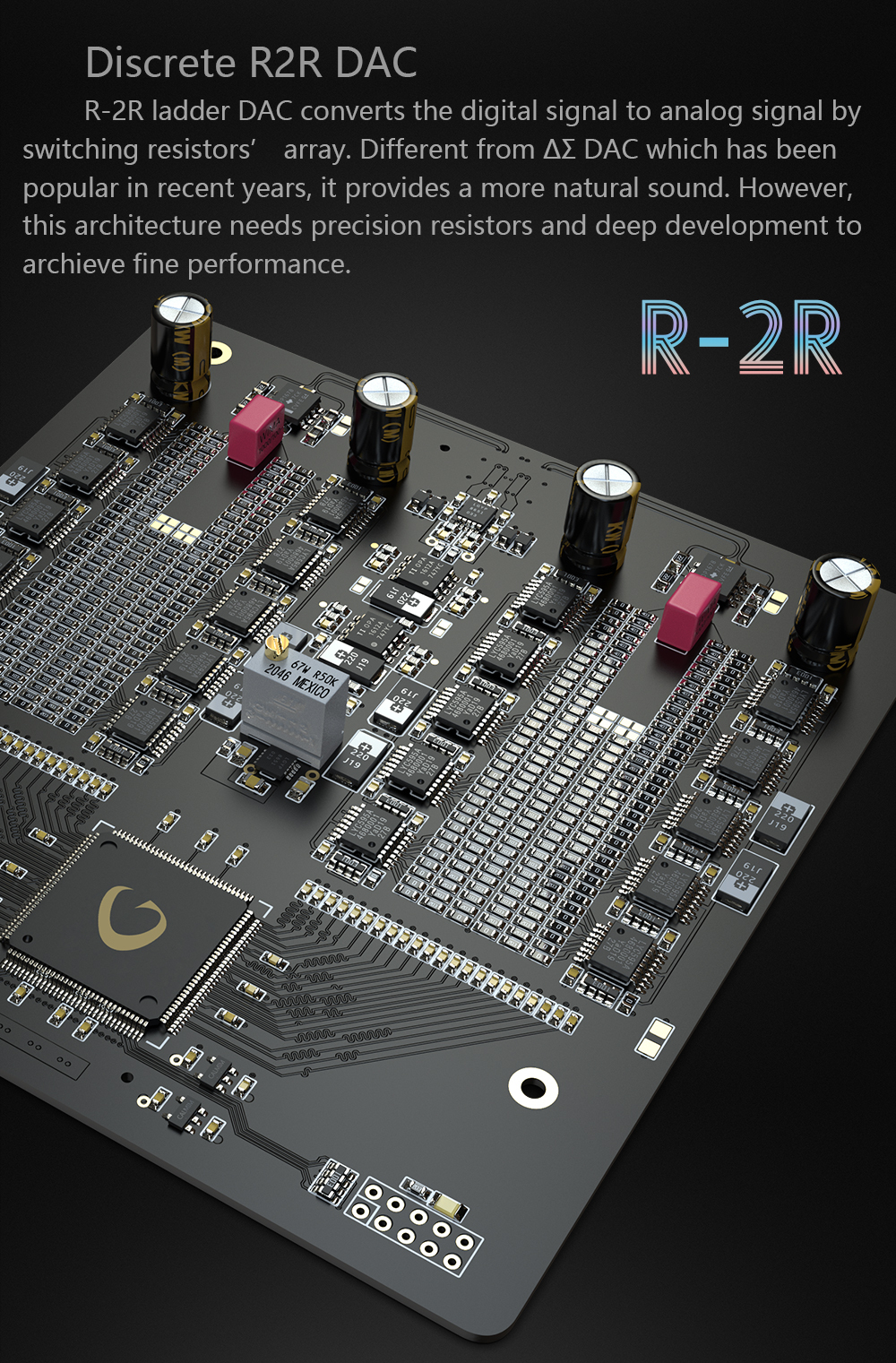
to buy:
GUSTARD DAC-R26 Discrete R2R DAC

from soundnews.net
high bang for buck
review @ iiwireviews.com
review @ soundnews.net
Other R2R DAC to consider
DENAFRIPS R2R DACS (PONTUS 15TH, VENUS II 12TH-1, TERMINATOR PLUS)
Mojo Mystique DACs
Mojo Audio’s New Mystique Y DAC is released (May 21 2024)
not r2r, dual DAC chip
Q-Pixel Inc startup has unveiled the first-ever full-color, ultra-high resolution microLED screen, marking a revolutionary achievement in the display sector. Q-Pixel is the first to present a full-color LED display boasting an astounding high pixel density of 5000 pixels per inch.
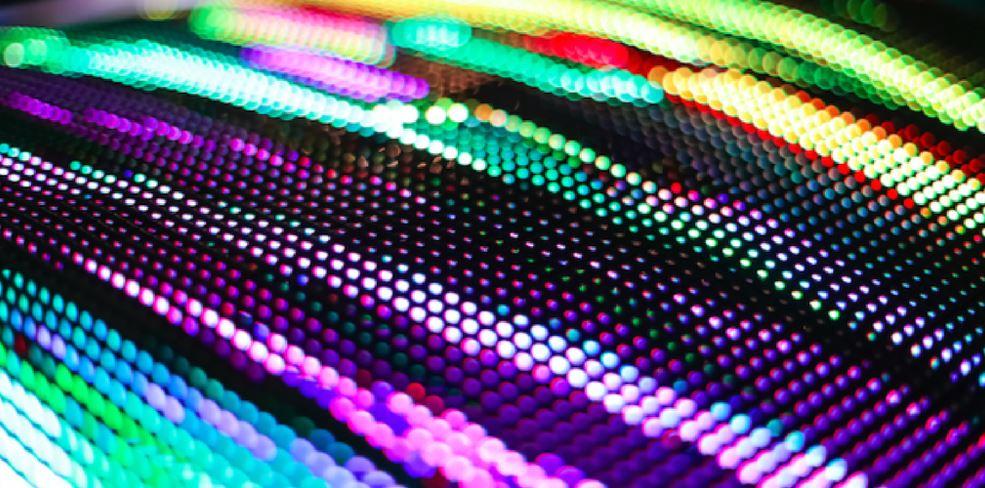
decorative image (from hardzone.es)
Q-Pixel's tunable, full-color single-pixel LED eliminates the need for pick-and-place (a key bottleneck in traditional LED display assembly), while at the same time enabling ultra-high pixel density.
Let's see & hope that this will lead (soon) to some real product. Ideally, it should also be scalable, resulting in higher production volumes that could eventually drive down the prices of microLEDs...
Startup develops 5000 ppi microLED, claims to have solved decades-old problems (flatpanelshd.com)
Apollo speakers review @ parttimeaudiophile.com

Apollo speakers image © parttimeaudiophile.com
96 db/W (2.83v@1m), 6 ohm, 300 watts, 46"(h) x 15"(w) x 13-16"(d) (117x38x41cm), 110lbs! (50kg), pair price: $18'500
Muse speakers review @ positive-feedback.com
95.5 db/W (2.83v@1m), 8 ohm, 300 watts, 32hz - 20khz, 38"(h) x 11"(w) x 14.5"(d) (96x28x37cm), 95lbs (43kg), pair price: $10'750

Muse speakers image © daedalusaudio.com via wixstatic.com
Comment seen in review of VAC 452 iQ Musicbloc
Comment by JRT (April 18, 2020) (could apply about ~ any tube amplification)
... Some garlic and onion might improve the taste of some things, but not everything, and likewise some nonlinear distortion products might sometimes provide euphonic effects in the signal chain, but likewise not always euphonic with everything, because in some cases the recordings are already very good as-mastered and don't need any further modifications with added nonlinear distortion products in the playback signal chain.
Just to be perfectly clear on this, any deviation from ideal transparent gain is some combination of linear distortion, nonlinear distortion and noise, and nothing else. Any audible characteristic contributed to the signal within the amplifier beyond ideal transparent gain will be caused by some combination of those, and by nothing else.
p.s. The Pioneer Paradox and Euphonic Distortion
Stereophile’s founder (the redoubtable J. Gordon Holt) used the term "euphonic distortion" to describe changes in a recorded signal that may make it more attractive - but that nonetheless distort the original.
the distortions would tend to soften the edges of recordings, making them less crisp but, well, prettier. To my mind, these components are like the Vaseline smeared on camera lenses when used with certain aging stars: they cover up some of the flaws and make it all more attractive.
Violins should be musical. Clarinets should be musical. Steel drums should be musical. Auditoria should be musical. CD players, amplifiers, and speakers should be accurate in reproducing that musicality with preamps and control centers to let listeners add their own "musicality" to taste.
Apple Music is adding support for high-quality, lossless and spatial audio through Dolby Atmos at no additional cost.
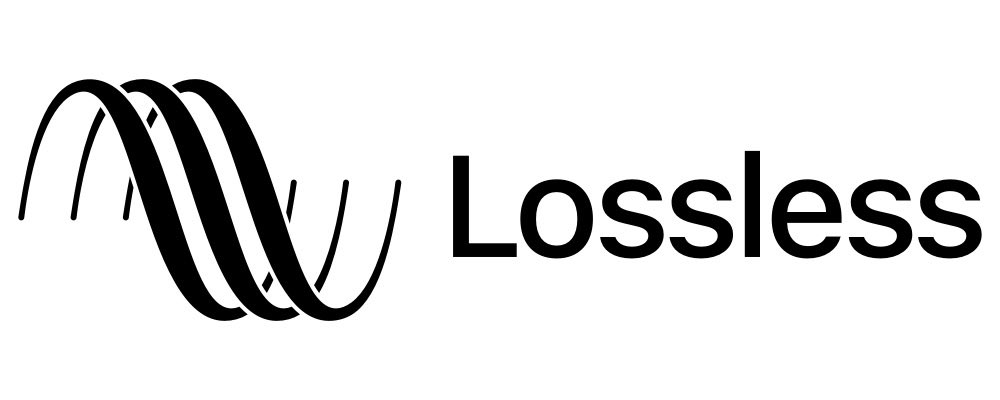
Spatial Audio with Dolby Atmos and Lossless Audio are coming to Apple Music subscribers beginning June 2021.
Apple Music's Lossless tier starts at CD quality, which is 16 bits at 44.1 kHz, and goes up to 24 bit at 48 kHz and is playable natively on [some!] Apple devices. For the true audiophile, Apple Music also offers Hi-Resolution Lossless all the way up to 24 bit at 192 kHz 1.
1 Due to the large file sizes and bandwidth needed for Lossless and Hi-Res Lossless Audio, subscribers will need to opt in to the experience. Hi-Res Lossless also requires external equipment, such as a USB digital-to-analog converter (DAC).
The questions are:
What about already bought "itunes" music (outside of apple music subscription) ?
What about airplay (2)?, will there be a 24bits/48kHz to Hi-Resolution lossless compatible version (or is it already possible? I though that all airplay audio is transcoded to 16bits/44kHz but not more... at least it will be "CD" quality like).
Real/full hi-res 24/192 might be overkill (for damaged-by-years-of-loud-sounds ears 😉but 24/48 would be nice (even just for the sake of being better than 1980s CD tech), let's hope this could be skeezed into airplay system (or one would need to use USB cables).
Apple announces spatial audio and lossless audio (May 17 2021)
About lossless audio in Apple Music
Can I redownload my iTunes purchases in lossless?
If you subscribe to Apple Music, you can redownload music in lossless only from the Apple Music catalog. [!?]
LG Chem has acquired "soluble OLED assets" (core technologies, licenses and some production facilities) from America's DuPont, that will allow it to mass produce OLED display using an inkjet printing method that is cheaper and faster than current (deposition) method.
Soon? better? cheaper OLED screens?
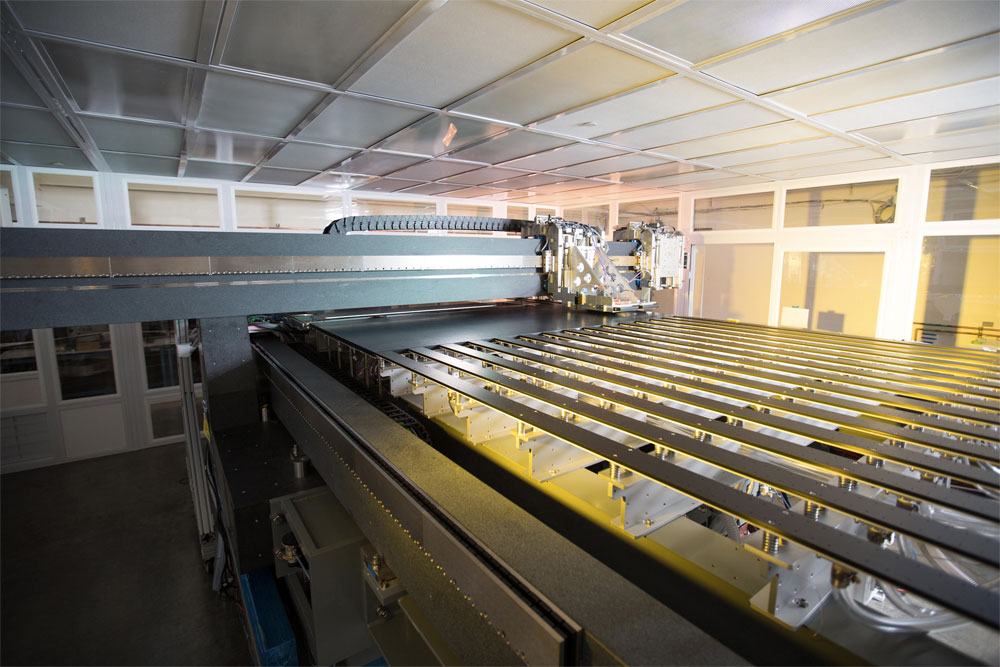
2015 DuPont and Kateeva OLED inkjet printer "prototype" (image from flatpanelshd.com)
Samsung has also been exploring the concept for years, according to reports. Samsung has reportedly been working together with Kateeva and DuPont, amongst others, but it is not clear whether LG's acquisition of DuPont's assets will affect its arch rival's plans.
With this acquisition, LG Chem now has the world's best competitiveness in the soluble OLED material sector. "We will try to provide the best quality products to our customers" said Shin Hak-cheol, vice chairman of LG Chem.
LG acquires DuPont's OLED tech to inkjet-print OLED displays (flatpanelshd.com article)
see also OLED ink jet printing: introduction and market status (Feb 10, 2019)
seen on flatpanelshd.com article
LG OLED TV panel business has finally turned to profit in the third quarter of 2018, after five years of growth. The sales volume of OLED TV panels has increased to over 1.7 million panels in 2017, a jump from only 200,000 in 2013, driven by successful global sales
I've just installed my new ~Audiophile DAC and Network Streamer: Oppo Sonica DAC using latest ESS ES9038PRO SABRE DAC chip (the flagship of the ESS SABRE PRO-series range) in a fully balanced configuration, powered by a clean toroidal linear supply.
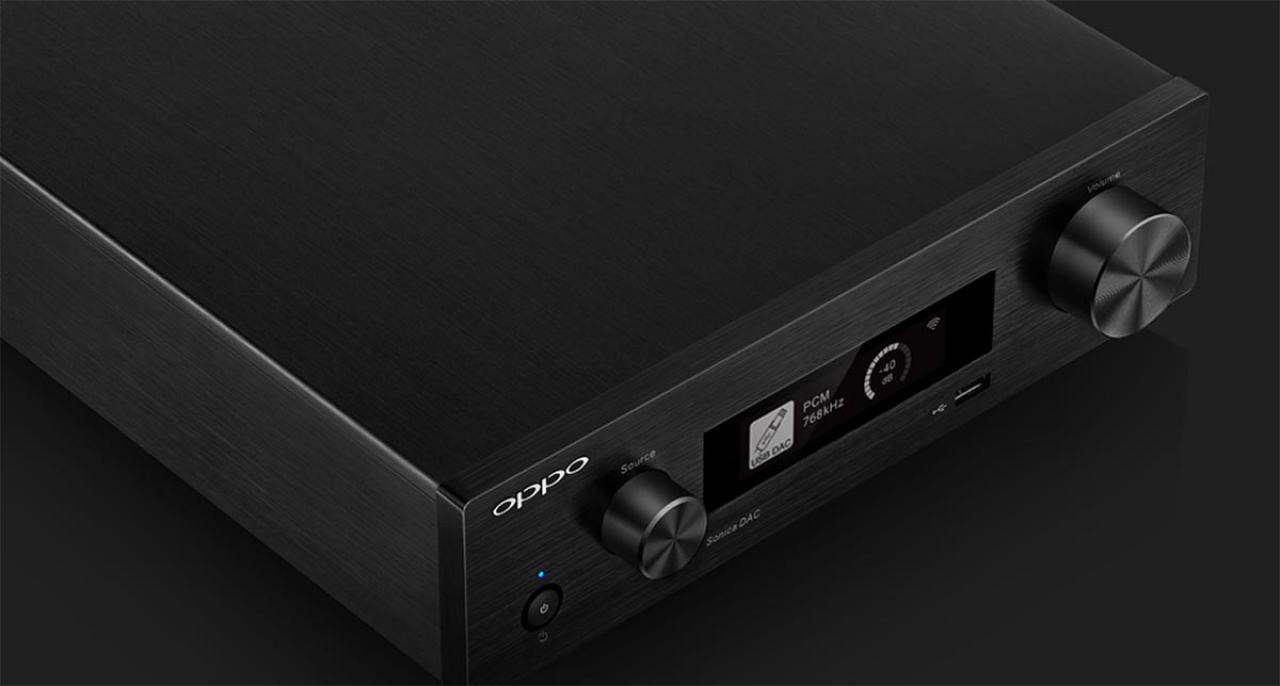
It can decode PCM audio up to 768 kHz 32-bits (192 kHz 24-bits for non USB Audio inputs & streaming) and supports DSD (DoP or raw) up to DSD512 (DSD64). It can stream music from DLNA servers over wired/wireless network. Music files on a directly connected USB storage devices or the network can be played under the control of a free mobile application. Audio Format Support: AAC, AIF, AIFC, AIFF, APE, FLAC, M4A, M4A, ALAC, OGG, WAV, WMA, DSF, DFF (no MQA for now).
It offers Bluetooth 4.1 and Apple Airplay connectivity so I can directly "Stream" music (over Wi-Fi) from our Apple devices.
It sounds detailed, smooth and neutral to warm. I enjoy listening - via airplay - to my audiophilically incorrect - but ~hifi-transparent - mostly iTune DRM free 256kbps AAC "records" (I haven't yet even bother to convert my old CDs into Apple lossless) 'can't stand spinning supports anymore! and with 256 AAC the listening "pleasure" is already there.
review from hometheaterhifi.com
review from laaudiofile.com
p.s. you can even find ModWright Tube Modification
p.s. Digital Music: Can You Hear Above 16-bit/44.1kHz?
p.s. about audio hypersonic effect
review @ audiosciencereview.com forum
(in distortion & noise test: best was Mola Mola Tambaqui DAC)
Great looking (a little bit over the top, but can't help loving it) new amplifier from McIntosh (Dec. 2017). A hybrid design: vacuum tubes for the pre-amplifier section with a solid state power amplifier output stage. 2x100W (8ohms). I need that.

from luxatic.com
The future of display: array of simple inorganic "conventional" (GaN LED technology) LED (Light Emitting Devices) miniaturized into microscopic pixel elements forming a high resolution screen. Emissive (direct emission) display ~like OLED but with higher brightness (as much as 30 times), higher efficiency (in terms of lux/W) and longer lasting.

© acvmagazine.com
The only problem to resolve: find a large scale and cheap way to assemble the micro-LEDs (and their circuits) on a substrate; for now the displays are extremely difficult to manufacture (low yield) = extremely pricey.
Please don’t get it confused with existing LED TV "technology" which is just LCD with a white LED backlight! (nor with QLED Samsung TVs which are still LCDs + LED backlight with a quantum dot layer).
Samsung plans on bringing a MicroLED TV in 2018.
Apple is secretly developing its own screens for the first time with about 300 engineers devoted to in-house development of (small) MicroLED screens.
MicroLED @wikipedia
Apple has acquired LuxVue Technology
Share prices of display makers hit by report of Apple working on microLED production
MicroLED, OLED article from digitaltrends.com
By-bye TVs next screen (in many years!) is gonna be a giant microLED (or OLED) sheet that you stick on a wall... Let's hope that my 2017 OLED (LG OLED65C7) won't fade away too fast.
(Named OLED65C7V in Europe/CH) My new screen (Nov. 2017). I went from 50' HD Plasma (Panasonic TX-P50V10E 2009) to 65' (25kg with stand) 4K OLED : pure/real blacks, great colors, intense highlights, no haloing or blooming artefacts, large viewing angle, and very low input lag (21ms): Amazing.

the best picture quality we’ve ever seen in a consumer-grade display. It offers perfect black levels, outstanding contrast, excellent out-of-box color and incredible depth and texture.
p.s. always use Technicolor or ISF Expert picture mode (except for Games), always turn off TruMotion completely: I wouldn't mind a strobing / black frame insertion mode (at the expense of brightness), to have CRT like motion quality; as with sample and hold screens (where frames are statically displayed until the next refresh) you have "eye-tracking based" motion blurring that cannot be correctly fixed with frame interpolations (ugly de-judder tricks e.g. LG "TruMotion", that give the "Soap Opera Effect"): anyway, I'm not sensitive to this kind of motion blur. ... n.b. 2018 LG OLED will have a black frame insertion mode!
p.s. existing "other" (non OLED, non microLED) LED TV "technologies" are just LCD with a white LED backlight! (QLED Samsung TVs are also still LCDs + LED backlight with a quantum dot layer)
LG OLED55C7 review on digitaltrends
flatpanelshd review (model 65E7, with same panel = same image quality)
LG: OLED TV lifespan is now 100,000 hours
A new psychoacoustics study - Jan. 20 2011 - shows that our bain compacts complex sound data - like lossless audio codecs - into simpler patterns and enjoys it!
(Water sound picture © Alexander Lauterwasser)
random noise could only be compressed [lossless - represented using less space, but keeping all the original information content] to 86% of its original file size, and techno, rock, and pop to about 60%, the apparently complex Beethoven's 3rd Symphony [can be] compressed to 40% [of its original file size!].
Dr Nicholas Hudson says "Enduring musical masterpieces, despite apparent complexity, possess high compressibility" and that it is this compressibility that we respond to.
we are hardwired to find simple patterns pleasurable
Looks like the brain enjoys information compressibility! = it is rewarding to simplify complex data into simpler "understandable" patterns (= I've done a good job! ;-)
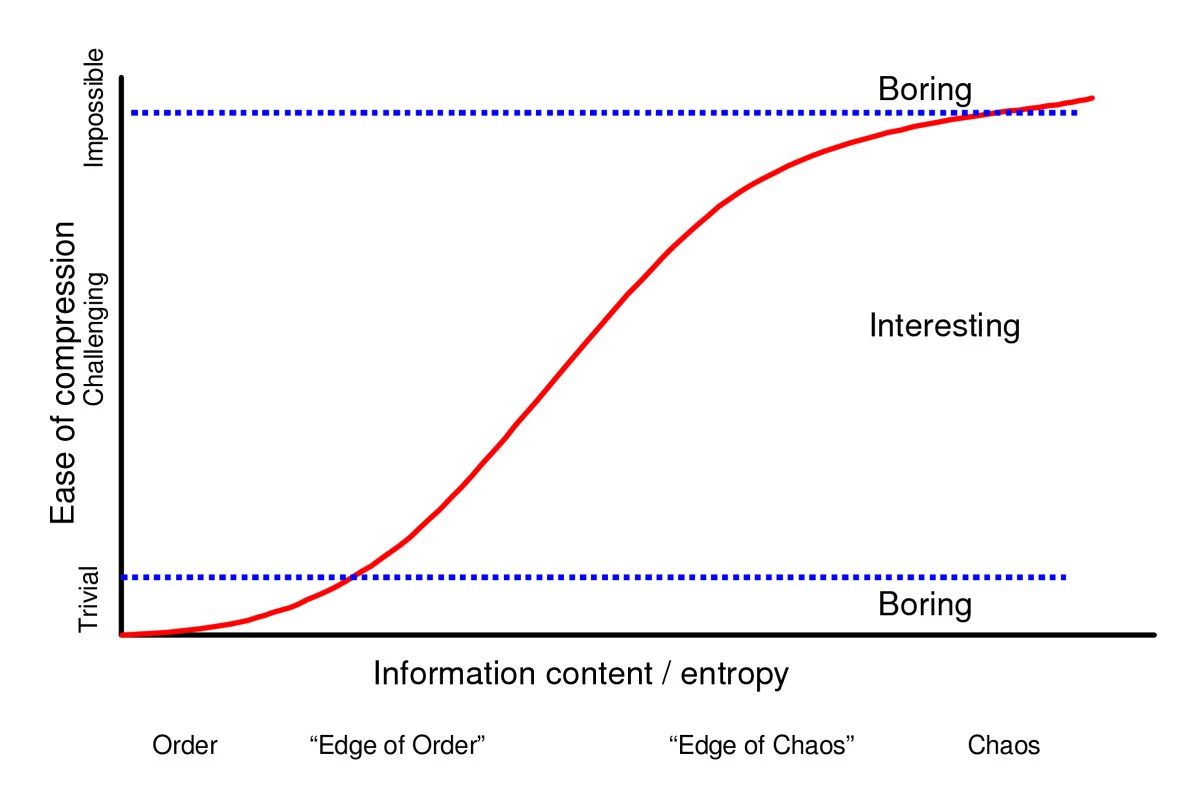
(figure 1 from BMC article)
Are all best compositions highly compressable? This is really an exciting (and controversial?) topic. We seem to enjoy medium-low information entropy (~disorder) in the data our brain processes.
Not the same, but this made me think: what about hifi transparent lossy compression: if the sound information is pre-simplified, even if the music sounds ~the same, is it still as enjoyable!? There will be less "brain work" needed, so maybe less reward? Anyway lossy encoding involves removal of unperceived frequencies, trying to fool the inner ear and maybe the primary auditory cortex but this does not involve higher level brain area where pattern processing is performed (the sound is simplified, not the melody)...
Psychoacoustics is a very interesting scientific field (btw too bad some audiophiles cling to irrational and indemonstrable beliefs)... When are we going to do double blind music listening tests coupled to functional neuroimaging scans and psychological tests? ;-)
Sciencedaily article - Creating Simplicity: How Music Fools the Ear
n.b. it should be added to This Is Your Brain On Music book!
At last, right before Christmas (2010) I've received my new "almost-audiophile" integrated amplifier. My requirements for a new amp (the old one was a 1994! NAD 306): black, elegant - sober/zen (no useless buttons e.g. boorish bass / treble knobs!), with blue "lights" to match my DAC (Cambridge Audio DacMagic) and digital-out iPod dock (Onkyo ND-S1) LEDs ;-) and obviously also cheap and with good reviews!
The only match I've found: a 995$ black 2 x 50w (at 8 ohms) Audio Analog Crescendo integrated amplifier ~ "hand" made in Tuscany (at Monsummano Terme).
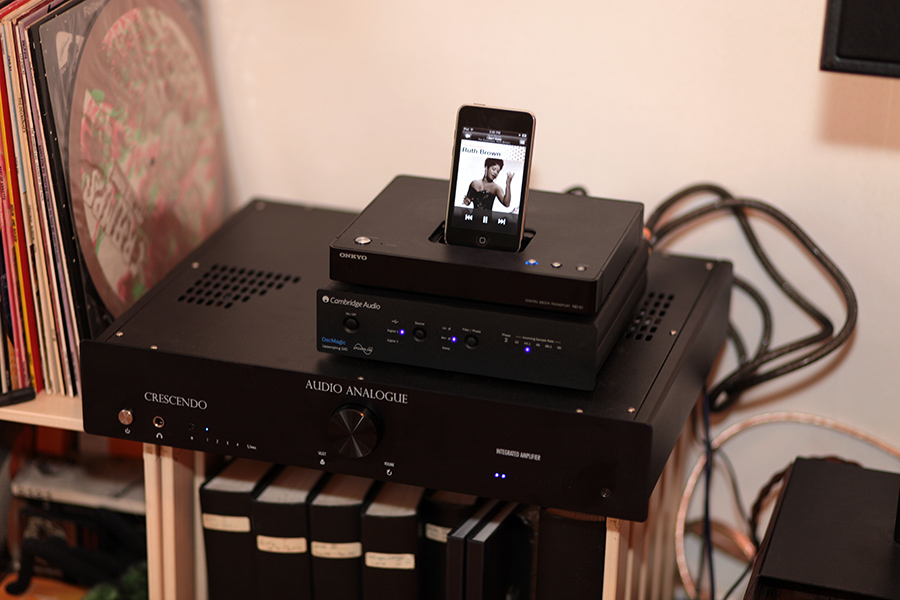
It looks very elegant / clean with its single knob! The volume knob, is also a source selector (press = source change, turn = volume change).
It has four user-selectable volume ladders (with different slope of attenuation) n.b. useless! The default one is a little steep (with some clipping on loud records occurring at already 60% of the ladder maximum! that in fact represent >90% of the maximum amplification), use the linear one ("D") instead!
Its bandwidth is 150kHz (above - 3db). It has a Signal/Noise ratio (at full power) of >100dB and only 0.05% of total harmonic distortion plus noise.
...
With my "Swiss" Portier Hifi (PHF) speakers (in fact rebranded old US "DLS" - Desktop Loudspeaker Systems INC. (2800 Mercier, Kansas city, MO; dissolved 6 April 1993) - speakers) it makes a nice and almost compact hifi stereo system.
review at 6moons.com
review at Hifi Choice (pdf)
(October 2010) Stereophile recommended
n.b. about my DAC and digital-out iPod dock see below iPod / iPhone as a descent digital source
p.s. ~ unrelated: interesting discussion about 16 vs 24bit audio
Feb 22 2011 p.s. Apple looking to offer higher quality 24-bit music on iTunes
A must read article from www.maximumpc.com !
Display Myths Shattered: How Monitor & HDTV Companies Cook Their Specs (article & site now dead)
Response Times: How Fast Is Fast Enough?
don't pay much attention to a [LCD] manufacturer's response time specs because they are so different from the real response time and motion blur that we have demonstrated here.
LCD published "Rise and Fall" (from black to white to black again) response time are much better than more subtle, "real life" response time (e.g. "gray to gray")...
The underlying reason why higher refresh rates don't mitigate blurring is that the true pixel response times [40 to 65ms] of [LCD] displays are considerably longer than the 60Hz [= 16ms cycle] video frame rate, so it doesn't matter whether the screen refresh rate is 60Hz or 120Hz [or 400Hz], or whether the LED backlights are strobed off during the frame updating. Similarly, adjusting the electronic processing enhancements that some models offer - controls that are supposed to reduce motion blur [in fact by reducing pixel transition steepness via interpolation to hide slow and weird lcd responses] - only served to introduce objectionable contours, edges, and other artifacts onto moving objects without reducing the overall motion blur.
Their "Motion Blur: Visual Proof" image is very impressive.
my traduction:
Frame interpolation (and subsequent frame alterations) is crap (turn it off: is non curative on LCD, useless on plasma as they just don't have any smearing with their instantaneous response time!) it gives a "video look" (+ a waxy look) on every sources (including films).
The fancier (e.g. 400Hz), newer the LCD is, the crappier the image is! A screen must be "high fidelity" (to what was recorded), adding non recorded interpolated fake frames (generated by a cheap processor) is low-fidelity, ugly and just plain wrong!
Interpolation and other processings are just done to hide LCD bad response time. Disable interpolation - if you can - then suffer LCD smear! Or better: use a plasma display (and don't brag about saving the planet etc... yes LCD uses less power! ... so just watch less tv! ;-) even for sports and games: better (real image) blacks, no smear, and as for interpolation on very fast movements: your brain is doing a better job than a lowly processor...
n.b. the 600Hz refresh rates of new Panasonic plasma is just nonsense, to combat high LCD framerate claims with even more inflation; that's sad (lies/stupidity race)! The image is still displayed at 60Hz but in 10 sub-fields! (10x60 = 600!)... Plasmas do NOT need >60Hz refresh rates to compensate for motion artifacts because they do not produce these motion artifacts!
n.b. (>2012) "new" LCD now likely have decent response time, but as with any sample and hold screen (where frames are statically displayed until the next refresh: LCD, OLED as opposed to strobed, CRT) you have essential "eye-tracking based" motion blurring that cannot be correctly fixed with frame insertions: only (source) high frame-rate speed or black frame insertion (creating a strobing effect compensated by the eye/brain, letting the brain do the interpolation!) can.
Contrast Ratio, Ad Absurdum
Everybody should know that the maximum displayable real/natural contrast (in a real image) is not equal to the screen dynamic range (intensity-ratio between an all black vs all white image) also called Full On/Off contrast! But now manufacturers (especially for LCD) use "dynamic contrast" or even just "contrast instead" of "dynamic range", inflating numbers...
Contrast-ratio specs are tremendously inflated. For the best LCDs, scientifically measured contrast ratios are actually between 1,500 and 2,000. But manufacturers almost never publish real contrast ratios anymore.
In their quest to quote ever-larger numbers, some manufacturers invented a completely meaningless spec called "dynamic contrast ratio" ... (Sometimes they don't even bother mentioning the "dynamic" part). Sadly, all manufacturers are now forced to play this game, as consumers wouldn't be interested in monitors and TVs that tout the true values. Meaningless contrast-ratio specs help substandard manufacturers by making their displays appear to be just as good as those from the best manufacturers, or even better, because the biggest liar wins.
see The Contrast Ratio Game (www.practical-home-theater-guide.com)
Color Gamut or Marketing Gambit?
Color gamut, which is the range of colors that a display can produce, is undoubtedly the most misunderstood and exploited spec
The color gamut that you want ... is the same color gamut that was used when the content you're viewing was created. If a different gamut is employed, you'll see different colors than you're supposed to see.
Virtually all consumer content is created using industry standards that specify the exact color gamut to be used. For computers and digital cameras it's sRGB. For digital HDTVs, it's called ITU-R BT.709 (often referred to as Rec.709). Fortunately, both of these standards specify the same exact gamut.
Indeed, displays claiming more than 100 percent of the standard color gamut simply can't show colors that aren't in the original source image. Expanded gamuts are just gimmicks that make consumers think they're getting something better.
Bit-Depth Misconceptions
First, remember that essentially all consumer content is 24-bit color. Thus, the source images have only 16.8 million colors, and the display can't "invent" intensities and color combinations that don't exist in the original.
n.b. Number of Colors Distinguishable by the Human Eye (at a fixed "aperture"): estimated between 100000 to 10 million! 24 bit encoding is way enough for us!
etc...
s. a little tear for SED ?
s. hurray for "OLED" (bought LG OLED65C7 Dec. 2017)
Bypassing the iPod cheap analog to digital audio circuitry is needed in order to get a good sound... Most iPod docks just use the iPod crappy analogic output signal (even expensive ones like the Krell that are just swindles!).
For what I'm aware of [2010] there are only 2 iPod docks that can directly extract iPod digital signal (without hack/modification of the iPod itself!):
n.b. Yes the ipod can output in digital! it's just that the signal will only go through a device with an apple authorization chip?/system (~like HDCP with video)
Wadia Digital 170iTransport
Onkyo ND-S1
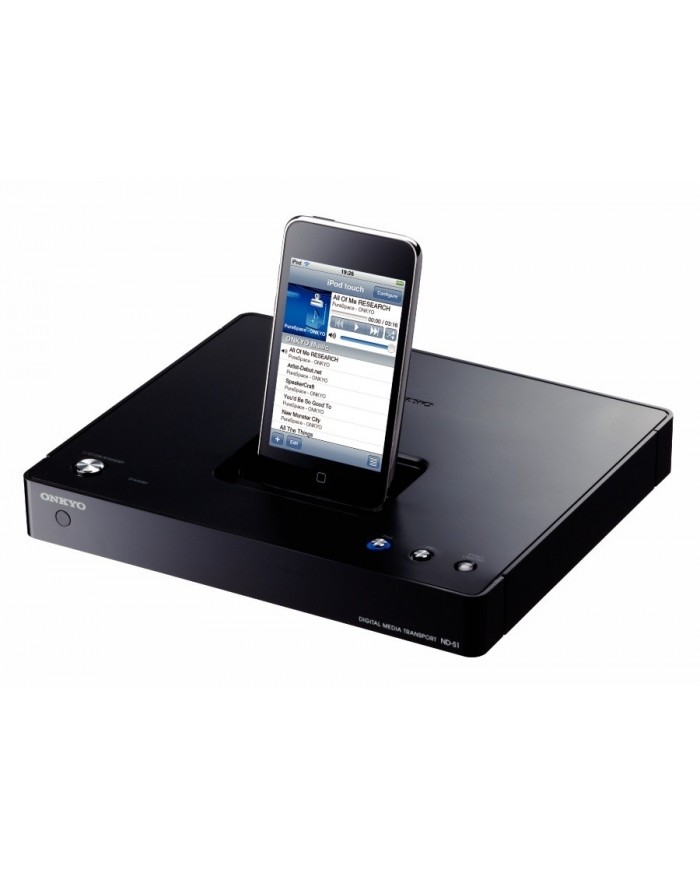
Onkyo ND-S1
Then hook the dock digital output (no need for fancy cables, as the digital information is resistant to some signal distortion...) to a dedicated good quality Digital to Analog Converter (DAC) (no need to go "uber-audiophile", as the main internal components are always not that expensive chips by companies like Texas Instruments! Though a good power supply for clean DC won't hurt):
e.g.
Cambridge Audio DacMagic
Firestone Audio Fubar4-Plus
Benchmark DAC1
Emotiva XDA-1
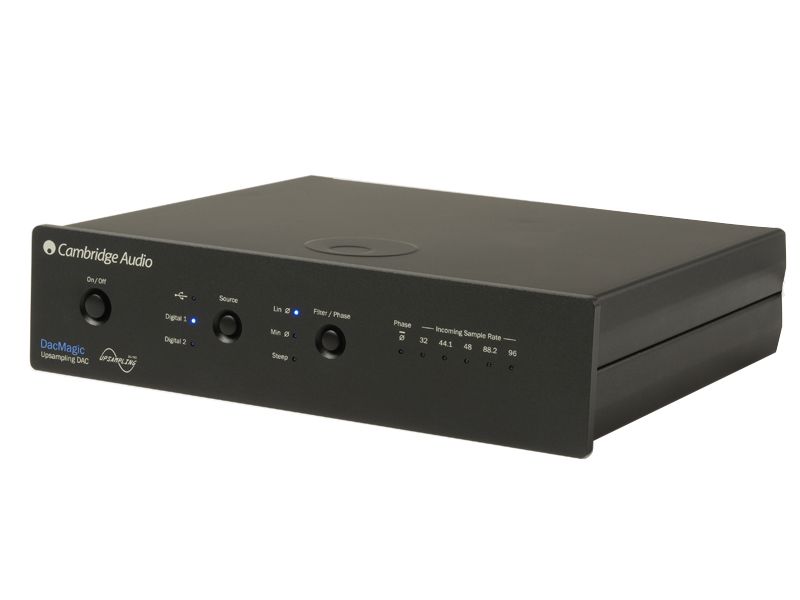
Cambridge Audio DacMagic
Then hook the DAC analog output to your (pre)amplifier with good cinch cables (as the analog signal directly represents the sound, unlike when encoded digitally, the information is therefore sensitive to signal distortion/loss!).
With this setting as there are no bit loss (unlike with a CD where vibrations, physical disc damage can result in data loss) + with Apple Lossless files, iPod represents a bit-perfect digital source better than any CD player... Too bad iTune store doesn't sell music in Apple Lossless format (but AAC at now 256kbps [raw/master from 44.1 kHz to 192 kHz @ 16 or 24bits, re-sampled to 44.1kHz @32bits then encoded with a variable bit rate with a 256kbs/sec target] ~ hi-fi transparent )...
n.b. without an ipod, another good, small, cool source: Logitech Squeezebox Touch
(has a digital output, no need for a pricey dock!) or cooler: a MacBook Air (connected via usb).
[>=2013] As the Apple Lightning connector passes audio in digital format through any official Lightning cable (so an Onkyo ND-S1 is not needed anymore) use a Lightning (or >=2018 USB-C) to USB Camera Adapter to connect to the USB input of your DAC (?with the default lightning to USB cable the external DAC should have an Apple Authorization chip & license to unlock the digital audio?) ... or connect the DAC to a digital audio out of a TV connected to an apple TV (via hdmi) itself connected to your ipad/pod/phone via AirPlay! ;-) or simpler / cooler:
[>=2017] use an AirPlay compatible DAC; e.g. Oppo Sonic DAC & Network Streamer (with latest SABRE ES9038PRO chip)
(n.b. via airplay 'looks like the signal is limited / transcoded to 16bits@44-48kHz max?)
seen on gizmodo
This damned expensive gadget makes the passion for vinyl a little easier and more modern, to boot. The ELP Laser Turntable is essentially that. Rather than dealing with the hassle of placing the needle on the record, just pop the baby in and let the lasers do all of the work for you.

too bad it's a little bit too expensive (15000$)! especially if you never listen to LPs...
Technology
Now that SED 's dead, what's available for large and flat screens: LCD (LED backlit or not) or Plasma and now OLED (then future MicroLED).
LCDs (especially the fanciest newest ones) have this ugly "hand held video like" look / soap opera effect that makes a great movie (24p dvd or bluray) looks like a "love boat" episode! (it's even funny: some people think it's the HD effect/ feel / "too real"! no, it's not: it's just ugly. turning off frame interpolation with 120/240Hz is not enough, the gamma also looks bad, no brightness details etc...) which leave them good only for watching tv or playing games. Therefore to watch movies the only available decent screen display technology was plama with deep blacks and (real) high micro-contrast; any sane videophile will chose plasma over lcd. Now >2017 it's OLED
Best Plasmas: ... used to be Pionneer Kuro Plasma
It's not just the fact that the PRO-110FD creates a beautiful image. It's that the image it creates is such a step above every other flat panel on the market that it is not even comparable.
Second-generation Pioneer KURO
The 2008 KURO family will posses black levels "five times deeper than the previous KURO
You can count on the June-bound models checking in at just 3.7-inches thick, sporting 1080p panels alone (no 720p), coming in 50- ($4,000) / 60-inch ($5,500) sizes
Note: Panasonic plasma seem to get good review too:
Panasonic TH-50PZ700U
Panasonic TH-50PZ850U against kuro
Basically, while Kuro is blacker (courtesy of its screen's darker tint) and brighter, Panny's color reproduction is much deeper, you get better dark detail, more accurate gamma, it uses 30 percent less power, AND it's cheaper ($3500 to $4600).
Anyway panasonic will be producing future Kuro panels!...
Pioneer - Panasonic agreement
2009 update: Kuros are dead!
latest panasonic seems to be "almost" as good
2009 best
new king of hdtv P54V10
Deep blacks, shadow details, color accuracy (with THX mode) etc...
Lighter (33kg!) than old plasmas and ~thin (3.3 inches, 2 on top), more power efficient than older plasmas (280w!).

(I bought a TX-P50V10E Dec. 2009)
2010
Panasonic (upper models): 5000000:1 dynamic range = better black levels
+ 3D for VT models (nice if it were without glasses!)
The improved scan and phosphors along with the deep blacks and accurate color provided excellent image reproduction and fine shadow detail. These improvements add up to amazing overall images free of the "video look" associated with 120 and 240 Hz LED LCDs.
2D model TX-P50V20E (Switzerland)
2017
... LG is the only OLED tv panel provider! ... All LG 2017 OLED models have the same panel! (with just different size, design and sound system)
I bought an OLED65C7 Nov. 2017
In-depth article

- The Nature of Interlaced TV, Film-to-Video Conversion, and Other Interesting Gambits
- Why Are Progressive Players Better?
- How Progressive Players Work
- 3-2 Pulldown
- Why Deinterlacing is Necessary
- Film-Mode Deinterlacing
- Video-Mode Deinterlacing
- What Does "True" Progressive Mean?
- Common Chipsets
etc...
Future display technology: Surface-conduction Electron-emitter Display
Initial specifications: 1080p (1920 x 1080) resolution, 1 msec response time (handles fast motion), and an extremely high 100,000:1 dynamic range ratio! + low power consumption! = ultimate display technology !?

Detailed article:
http://www.pcauthority.com.au/feature.aspx?CIaFID=1428
News update (Oct. 3rd, 2006):
http://www.engadget.com/2006/10/03/55-inch-sed-hdtvs-on-the-way-in-08
Canon & Toshiba have just annonced that SED displays will finally be hitting shelves in limited quantities by late 2007, and entering mass production in 2008. Leading the charge will be these 1080p 55-inch models with 450 nits of brightness, 50,000:1 contrast ratio, stunning 1ms response time...and no price tag yet!
With Samsung, Sharp and Sony releasing "Full HD" LCDs in the 50-inch range for around 5 large this fall, the market in 2008 could be tough to crac!
News update (Jan. 2007):
SED Won't Become Commodity article
Toshiba plans to start shipping SED products in fall 2007, but considers focusing on professional users at first, positioning the SED as a "limited, pricey, high-end" product. Nishida said the company's plan to build an SED volume-production facility in Himeji is "advancing on track." However, saying the SED is not "competitive against the LCD TV" in the market for consumer TVs, Nishida indicated that Toshiba is not planning to bring SED to the current consumer TV market.
Postponed again (May 25 2007):
Canon press release
Canon Inc. today announced that it has decided to postpone for the time being the launch of next-generation flat-panel SED* televisions ... Reasons for the postponement include prolonged litigation currently underway in the United States and efforts to establish mass-production technology aimed at realizing further cost reductions.
SED might be dead/too late!... too bad ... meanwhile, plasma, LCD screens are getting better and better and cheaper!
Good news (August 2008):
Canon wins SED lawsuit, can produce SED displays again
In spite of their legal success, Canon announced at the same time that the financial crisis of 2008 was making introduction of the sets far from certain
... [but] ... a source within Canon told me at the show that the SED is still very much alive as a pro monitor technology
(wikipedia SED article)
May 2010: SED's dead
Canon officially announced on 25 May 2010 the end of the development of SED TVs for the home consumer market,[26] but indicated that they will continue development for commercial applications like medical equipment.
(wikipedia SED article)
... long live to OLED ('bought a LG OLED65C7 tv Nov. 2017)
... or even better MicroLED ~same quality as OLED but brighter and longer-lived (Samsung plans on bringing a MicroLED TV in 2018)
Researchers at USC have taken another step towards that holiest of sci-fi dreams: the 3D "holographic" display.

The team's device - using a spinning mirror (dangerous?) - can project a three-dimensional image that can be viewed from 360 degrees, regardless of the viewer's height and distance.
video:
p.s. now (>2017) look's like progress has been made for Holographic display e.g. using light-field images as full holographic pictures c.f. Light Field Lab raises $7 million for Holodeck-like holographic displays




